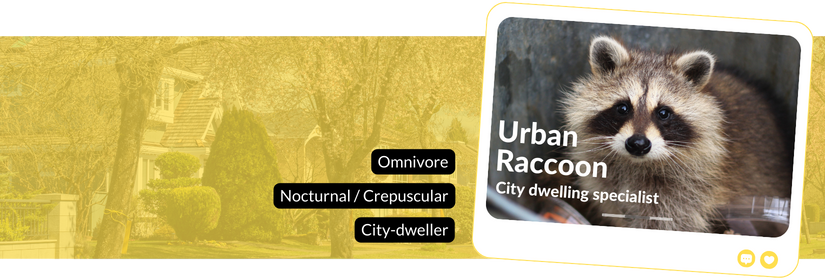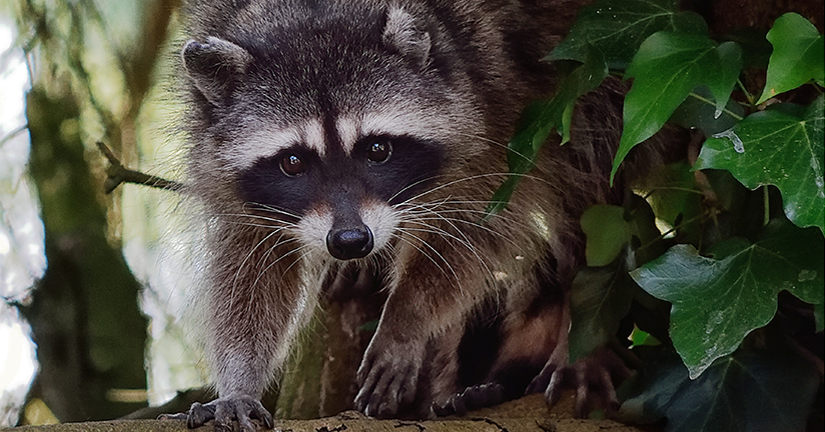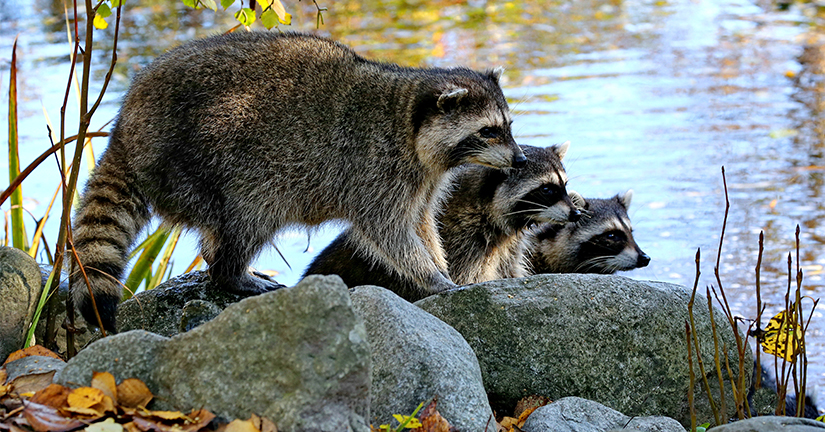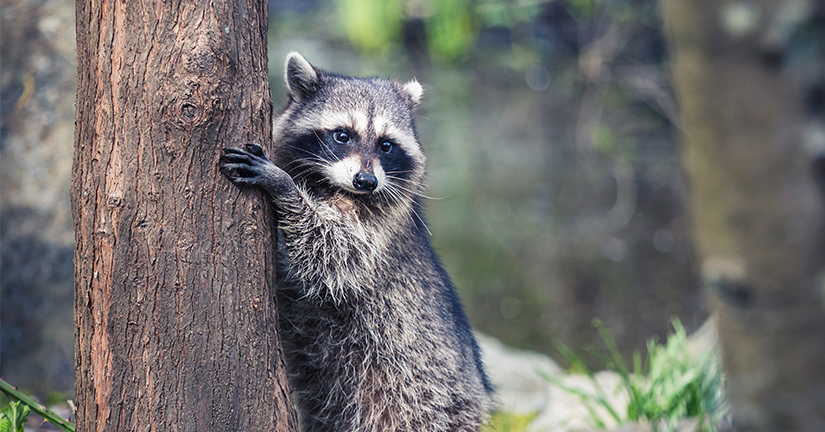Meet your urban wildlife neighbours: 5 things to know about urban raccoons

As cities expand, more people are moving to areas that are close to wild habitats. Some wildlife thrive on this closer contact, including urban-dwelling raccoons.
Like any neighbour to neighbour relationship, there can sometimes be disagreements. Unfortunately, if these disagreements escalate, raccoons can suffer as a consequence. However, with a little knowledge and some proactive steps, you can prevent human-wildlife conflicts and ensure a harmonious relationship.
1. Urban raccoons are city-dwelling specialists
Raccoons are a common urban species, and they live quite differently than their woodland –dwelling cousins.
Raccoons’ intelligence and remarkable hand abilities have helped them to adapt to and navigate urban environments. They live in much smaller home ranges and in higher densities than in forests. They are mostly nocturnal but can also be active during the day, and they search for different types of food.

Photo by William Griffin
2. Raccoons eat a wide variety of foods
Raccoons are scavengers and omnivores, with a diet that includes nuts, fruits, insects, snails, fish and discarded food.
When urban raccoons go looking for food they are attracted to bird feeders, ponds, and pet food. They are excellent scavengers, so dumpsters and garbage bins in urban areas are an attractive source of food.
3. Raccoons have families in the spring
Raccoons mate during the winter months and give birth in early spring. It comes as no surprise that raccoon mothers-to-be are actively looking for safe, warm places to den as early as February and March!
Baby raccoons are born blind and deaf, and it will take up to three weeks for them to become mobile. During the first few months of their lives, they rely entirely on their mother to survive. She leaves the den to search for food, so it is common to see litters of 3 to 5 baby raccoons sleeping or playing alone in their den.

4. Raccoons like warm and cozy places, like your attic
Raccoons like to den in spaces that provide warm, dry shelter.
For urban raccoons, this can mean ground burrow or hollow trees but it can also often mean in people’s houses. In particular, they commonly find spaces in unprotected chimneys, cozy attics, garden sheds, and under porches, decks and foundations. These spaces provide the warmth and safety they need to protect their families from predators like coyotes.
5. Raccoons don’t like to approach humans – humans should do the same
Although they live alongside us, urban raccoons usually do not like to approach humans. However, easy access to discarded human food, pet food, bird feeders, and fallen bird seed may decrease their fear of people and attract them to an area.
Raccoons are generally not dangerous to people, but they may become protective of a food source and mother raccoons may become aggressive if they feel their babies are threatened.

How to be a good neighbour to urban raccoons
To maintain a safe environment for our wild neighbours and our pets, we need to do our part to prevent unnecessary conflicts.
- Maintaining your house is key to preventing raccoons from nesting in and around your property. Locate potential access points around your home. Makes sure there are no animals inside before you block vents, crawl spaces and holes to prevent raccoons from moving in. AnimalKind accredited company AAA Wildlife Control has useful advice for preventing animals from re-entering your home.
- Do not feed raccoons because it is harmful (PDF) and decreases their fear of humans. Secure your garbage bins, clean overflowing bird feeders and store away pet food. Make sure food attractants are not present around your property.
- Say no to inhumane wildlife control methods like using traps that can hurt raccoons or other non-target animals, or illegal practices like drowning or using bait poison.
- Do not hire a company that wants to trap and relocate raccoons. This practice is not humane and only provides temporary solutions. When raccoons are relocated, they are taken to an unknown territory. They may be hurt by other animals fighting over territory or starve if they are unable to find food sources. Some may die trying to get back home. Trapping also puts baby raccoons at risk as you separate them from their mom and their only food source during their first weeks of life.
There are many humane ways to ensure you and your wild neighbour can get back to keeping a neighbourly distance.
For more information on raccoons and humane methods of control, read our wildlife control best practices (PDF).
If you are dealing with raccoons at home, call an AnimalKind company!
Stay informed!
Get AnimalKind news delivered to your inbox 4 to 6 times a year.
The BC SPCA processes your personal information to provide you with the products and services you have requested as well as for advertising and analytics purposes. More information on uses and how you can opt out may be found in our privacy policy.